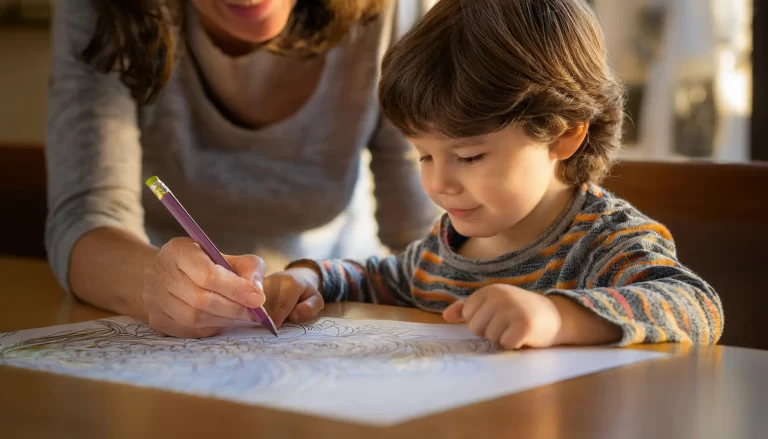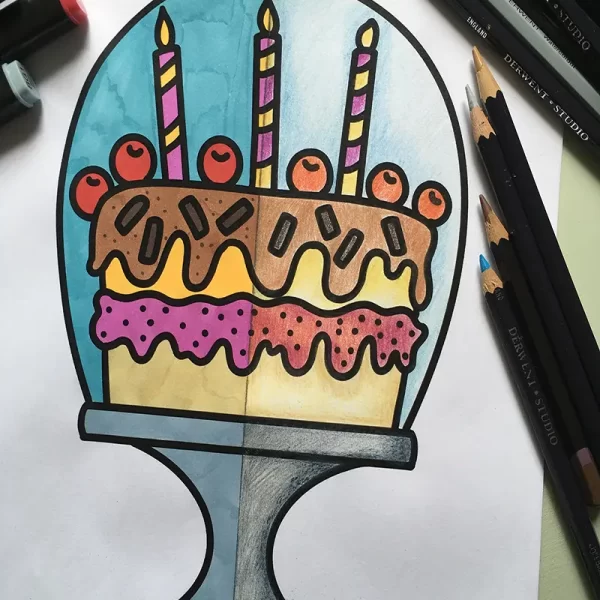Mindful Creative Expression: How Drawing, Coloring, and Picture Books Nurture Wellbeing
Are you feeling overwhelmed or disconnected? Do you notice your child struggling with big emotions? In today’s fast-paced world, it’s easy to feel stressed. But what if I told you that simple creative activities, combined with mindfulness, could be powerful tools for fostering emotional wellbeing? This article explores the concept of mindful creative expression and how it can help both children and adults find calm and build emotional resilience. We’ll delve into how drawing, coloring, and engaging with children’s picture books can be transformative practices.
The Science Behind Mindful Creative Expression
Mindfulness, the practice of being present without judgment, has been shown to reduce stress and anxiety. When we engage in creative activities, like drawing or coloring, we naturally become more focused, shifting our attention away from worries. This engagement activates different parts of the brain, promoting relaxation. Research suggests that these activities can even help regulate emotions and improve overall mental health. The act of mindful creative expression, whether it’s a detailed drawing or a simple colored pattern, allows us to express ourselves non-verbally, which is especially beneficial for children who may not yet have the words to articulate their feelings.

Drawing and Coloring as Mindful Practices
So, how can you incorporate mindful creative expression through drawing and coloring into your daily routine? It’s easier than you might think. Start by creating a dedicated space for creativity, free from distractions. Encourage children (and yourself) to focus on the sensations – the feel of the crayon on paper, the texture of colored pencils, the colors themselves. Instead of focusing on the end result, emphasize the process. Ask questions like, “What does this color make you feel?” or “How does this texture feel on your fingers?” These simple prompts help bring awareness to the present moment. Mindful coloring, for example, can be a powerful tool for stress reduction, allowing the mind to focus on the repetitive act of filling in shapes, promoting a sense of calm and focus.
The Role of Illustrations in Mindful Creative Expression
Children’s picture books are not just about words; the illustrations play a crucial role in storytelling and emotional connection. Detailed and expressive illustrations can draw children in, allowing them to explore emotions and perspectives safely. When we take the time to observe the illustrations in a picture book, we are practicing mindfulness. We notice the details, the colors, and the emotions conveyed through the artwork. This can be a powerful way to help children understand and process their own feelings. The visual narrative of a picture book also helps children develop empathy. This is a key aspect of mindful creative expression when engaging with picture books.

Benefits of Mindful Creative Expression for Children and Adults
The benefits of mindful creative expression extend to both children and adults. For children, these activities can help with:- Emotional Regulation: Learning to manage and express emotions in a healthy way.
- Stress Reduction: Finding calm and relaxation through creative engagement.
- Improved Focus: Developing concentration and attention skills.
- Self-Expression: Exploring and communicating feelings through non-verbal means.
- Confidence Building: Experiencing the joy of creating and expressing themselves.
Adults can also benefit from these practices, experiencing reduced stress, enhanced creativity, and a greater sense of wellbeing.
Practical Tips for Parents and Educators
- Create a dedicated space: Designate a quiet area for creative activities.
- Provide a variety of materials: Offer crayons, colored pencils, markers, and different types of paper.
- Encourage process over product: Focus on the enjoyment of the activity rather than the end result.
- Use prompts and questions: Guide children to explore their feelings and sensations.
- Read picture books together: Take the time to observe and discuss the illustrations.
